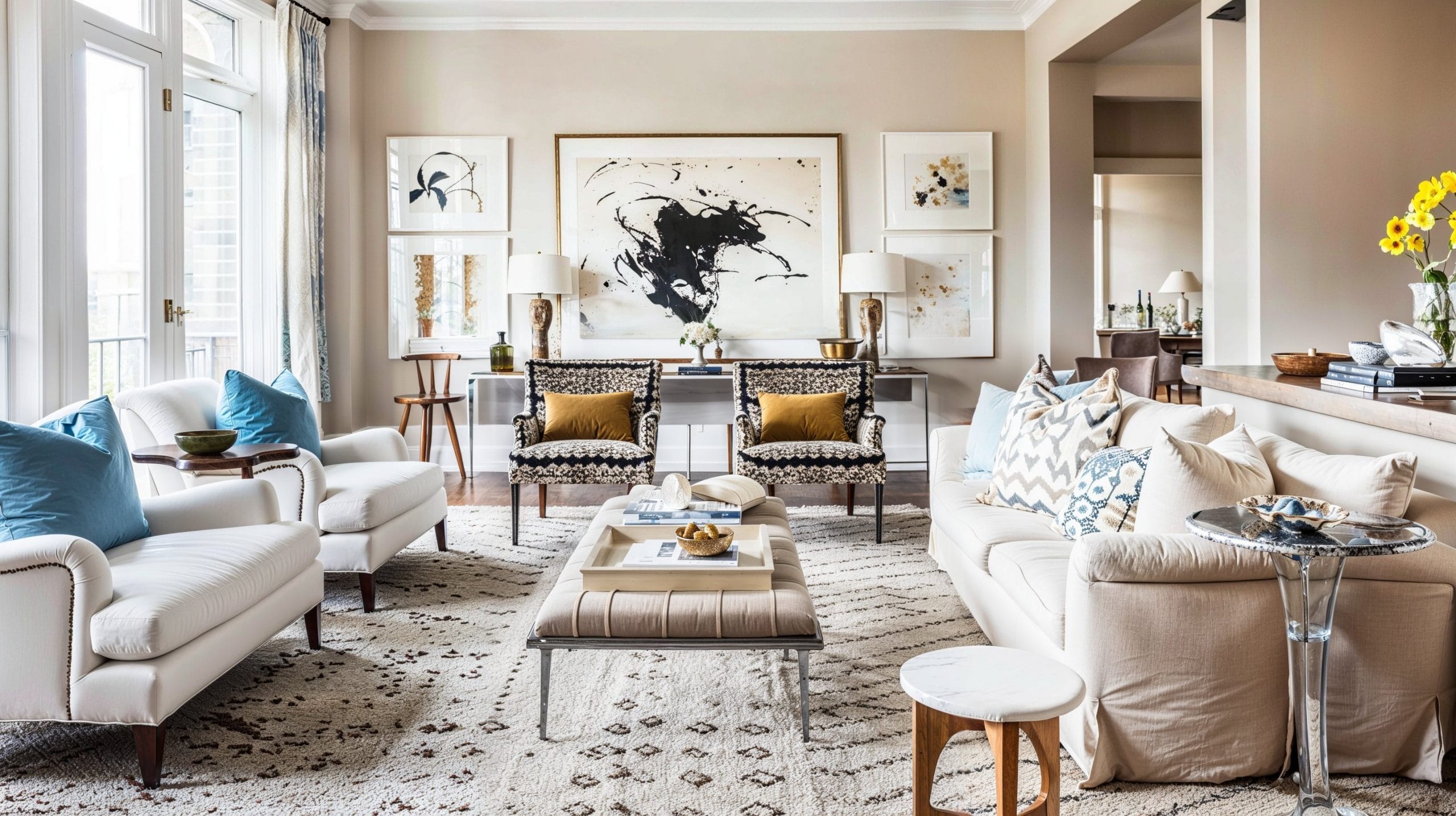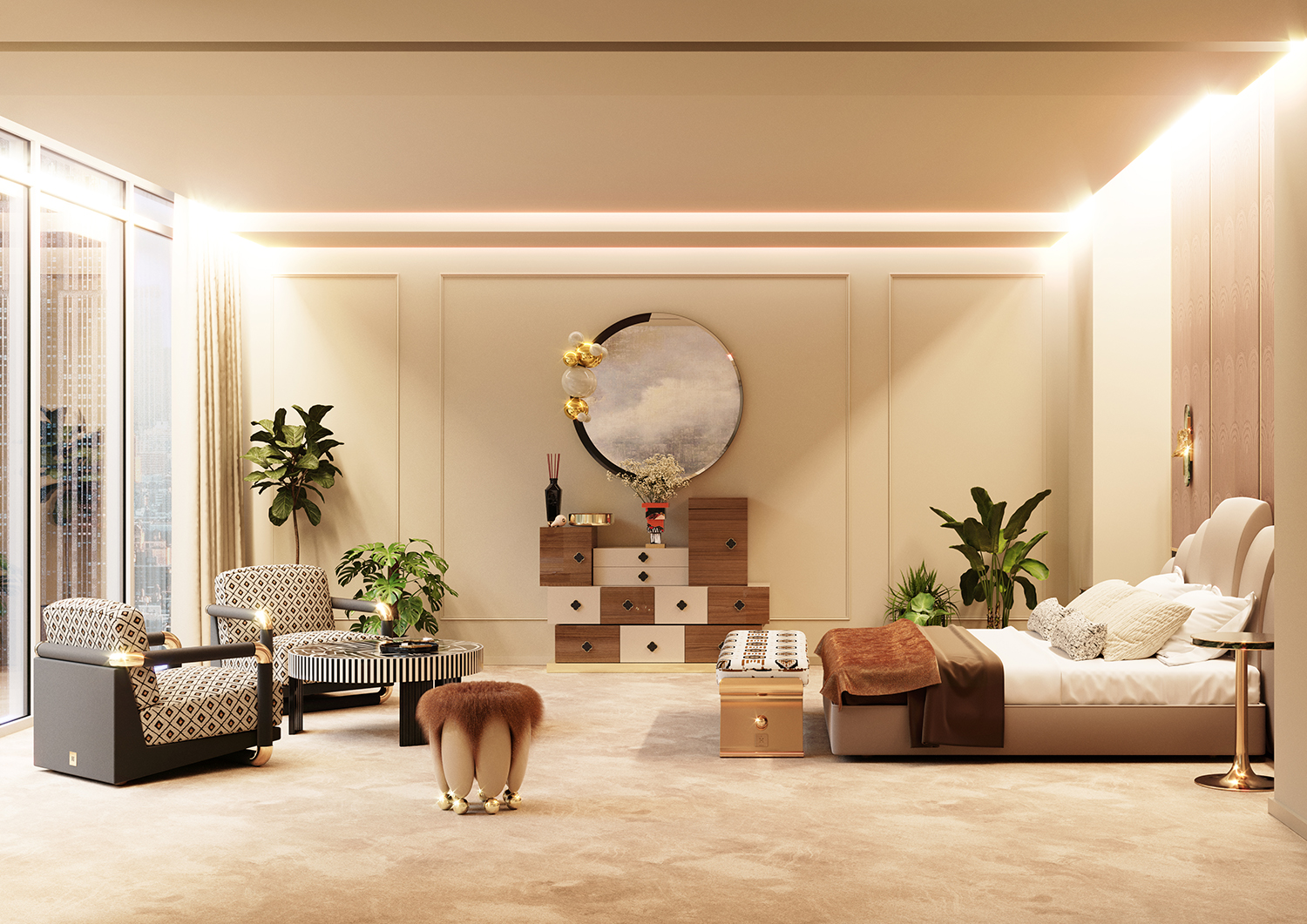Achieve a stunning look with miami interior design that reflects elegance and functionality.
Transform Your Home With Necessary Principles of Interior Layout and Aesthetics
By recognizing the impact of color theory and the value of texture and patterns, one can create rooms that are not just aesthetically enticing yet likewise deeply individual. Accomplishing this equilibrium involves even more than simple design; it includes a critical setup and an eager understanding of how each component connects within an area.
Comprehending Color Concept
Comprehending the principles of shade concept allows designers to create rooms that resonate mentally with passengers while meeting functional requirements. Each classification plays an essential function in establishing consistency within an area.
The mental effect of shades is extensive; warm hues such as reds and oranges evoke power and warmth, while amazing tones like blues and environment-friendlies advertise peace and serenity. In addition, making use of corresponding shades improves visual passion, creating striking contrasts that can raise a room's appeal.
Neutral colors, on the various other hand, work as a versatile background, enabling other layout elements to beam. It is vital to consider factors such as lights and the area's objective when choosing a shade palette, as these can alter the understanding of colors throughout the day.
Eventually, a well-considered color design can transform an area, fostering a sense of convenience and style that aligns with the citizens' preferences. Proficiency of color theory is, as a result, an important skill for any kind of indoor designer aiming to create unified and inviting environments.
Achieving Equilibrium in Style
Exactly how can designers achieve a sense of equilibrium in their spaces? Accomplishing balance in layout is fundamental to developing harmonious interiors. Developers can make use of 3 key sorts of balance: in proportion, asymmetrical, and radial. Balanced balance entails setting up aspects equally around a main factor, fostering a feeling of order and serenity. This type commonly includes sets of furnishings or art work, improving visual security.
Unbalanced balance, on the other hand, depends on varying components that still attain a cohesive look. This method permits more vibrant and casual arrangements, providing passion while preserving stability. By very carefully choosing differing sizes, colors, and appearances, developers can create a visually compelling area that feels balanced yet energised.
Radial equilibrium emphasizes a central focal point with elements radiating outward. This style is generally seen in round designs, where furnishings and style produce a natural border that draws the eye internal.
Inevitably, achieving equilibrium requires thoughtful consideration of scale, percentage, and the connections in between elements. miami luxury interior design. By masterfully applying these balance concepts, designers can change spaces right into settings that really feel both visually pleasing and functionally unified, enhancing the general experience for occupants
Importance of Spatial Awareness

An eager sense of spatial recognition allows developers to identify centerpieces within a space, assisting the customer's focus to vital features while maintaining an overall sense of unity. It also aids in the tactical placement of illumination, which can substantially influence the perception of area and state of mind. Comprehending spatial relationships enables the designer to cater to the particular demands of residents, making certain that each location offers its desired purpose without endangering aesthetic appeals.
Ultimately, spatial awareness is essential for maximizing the potential of any type of indoor room. By meticulously considering the interplay in between dimensions, format, and feature, designers can produce settings that not only fulfill sensible needs however additionally evoke a feeling of convenience and charm, boosting the total living experience.
Incorporating Texture and Patterns
Embracing a varied variety of textures and patterns can dramatically boost the aesthetic and tactile allure of an indoor room. The tactical use different products-- such as timber, metal, material, and rock-- produces depth and passion, making a room really feel a lot more inviting and vibrant. Integrating smooth surfaces with harsh structures can establish a balance that draws the eye and engages the senses.
When integrating patterns, consider both range and repetition. Big patterns can act as centerpieces, while smaller sized, subtle styles can match various other aspects without overwhelming the area. Layering patterns, such as pairing floral pillows with striped tosses, includes intricacy and a feeling of harmony if executed thoughtfully.
It is likewise important to keep a natural shade combination, ensuring that appearances and patterns work with each other as opposed to complete for attention. By picking a couple of essential textures and patterns, you can create a linked aesthetic that mirrors your individual design while boosting the general atmosphere of the room. Eventually, the cautious incorporation of these elements can change an ordinary area right into an advanced atmosphere abundant with character and warmth.
Customizing Your Area
Creating a space that reflects your personality is vital to accomplishing like it an absolutely inviting setting. Personalization in interior decoration enables you to infuse your unique design and passions into your home, transforming it from a plain shelter right into a haven that talks to that you are. Begin by selecting a color scheme that reverberates with your feelings-- bold shades can invigorate, while soft tones use serenity.
Include artwork and decor that mirror your passions, whether it be traveling, nature, or abstract ideas. Presenting personal collections, such as publications, photographs, or souvenirs, can stimulate treasured memories and develop centerpieces within a room. Additionally, think about personalizing useful items, like upholstered furnishings, to line up with your aesthetic preferences.

Conclusion
To conclude, the improvement of a home through the crucial concepts of interior decoration and aesthetics requires an extensive understanding of color concept, equilibrium, spatial understanding, structure, and customization. Each element adds significantly to developing a harmonious and practical living environment - luxury interior design. By thoughtfully incorporating these concepts, individuals can enhance the aesthetic charm and psychological resonance of their areas, ultimately cultivating a home that mirrors one-of-a-kind identities while supplying convenience and functionality